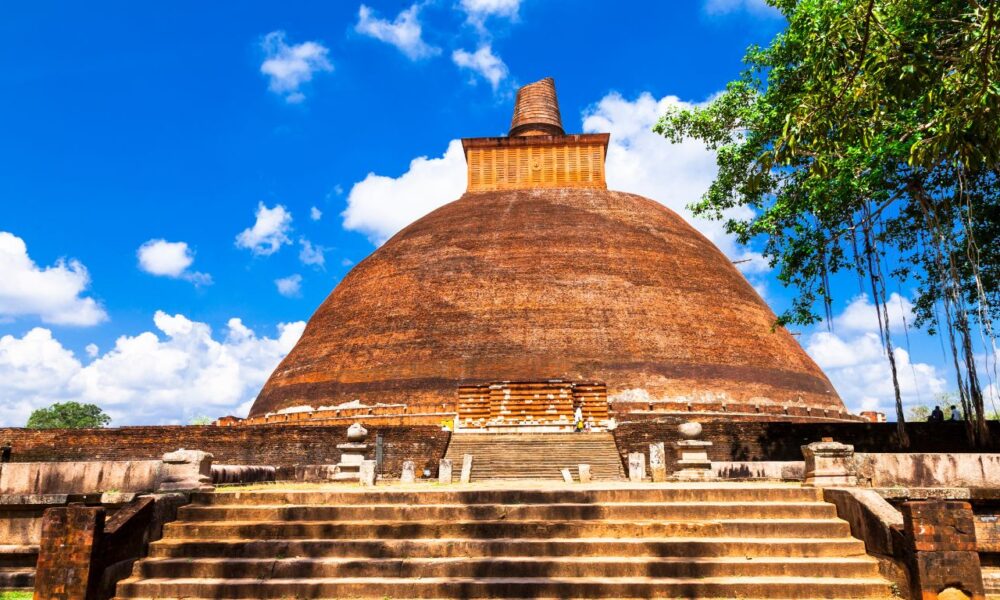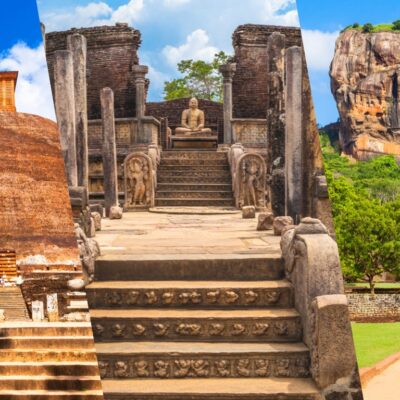Introduction
There is no denying the fact that Sri Lanka stands to be a land of history and cultural heritage, where a traveler can explore with depth into this magnificent island nation. Not only from historical cities and sacred temples but also by colonial-era architecture and UNESCO World Heritage Sites, Sri Lanka is sure to grab the interest of history enthusiasts and culture explorers alike. BH Lanka Tours is proud to introduce expertly guided historical tours to stories and traditions that have shaped Sri Lanka for thousands of years.
Ancient Cities of Sri Lanka
The ancient cities of Sri Lanka happen to be among the world’s most interesting historical sites. These cities, which have once served as powerful kingdom capitals, possess marvelous ruins, temples, and monuments that bear witness to the glorious past of the island.
Anuradhapura itself is one of the island’s most key historic sites—it was the first capital of Sri Lanka. This is an ancient city founded in the 4th century BC, functioning as the center of Theravada Buddhism for many years: over a millennium until finally it ceased to exist. These days, one is able to see well-preserved ruins of palaces, monasteries, and stupas, including the very famous Ruwanwelisaya, the massive stupa which has become the symbol of Sri Lanka’s Buddhist heritage.
Polonnaruwa is the second capital of Sri Lanka and a UNESCO World Heritage Site. It is an amazing collection of ancient structures. The town, which gained prominence during the 10th to 13th centuries, is famous for its fine carvings and statues, particularly the Gal Vihara. Ancient irrigation systems in Polonnaruwa, some still functioning today, are a testament to their creators’ skills in engineering.
Sigiriya Rock Fortress—this “Lion Rock” is one of Sri Lanka’s most unique landmarks. This ancient rock fortress, built by King Kashyapa back in the 5th century AD, provokes amazement at the ingenuity and expertise of ancient engineering and artistry. The fortress crowns a boulder that is 200 meters high, surrounded by lush gardens and moats. At the top, one finds the remains of the royal palace; on every side, one may get bird’s-eye views of the countryside.
Colonial Influence
The colonial era left an indelible mark on the architecture, culture, and way of life of this small island. Portugal, the Netherlands, and England ruled Sri Lanka at various times in history, whose reflections are preserved in the buildings, customs, and tongue of the country to this day.
Galle Fort: It is a UNESCO World Heritage Site and probably the most preserved monument of colonial architecture in Sri Lanka, built by the Portuguese in the 16th century and later developed by the Dutch. This fort showcases a live museum of history with cobblestone streets, buildings dating from the colonial period, and very old churches. A visitor can walk on the ramparts, go to the Galle Lighthouse, and stroll along quaint streets with boutiques, cafes, and art galleries.
Colombo: This is Sri Lanka’s capital city—a busy metropolis that combines so flawlessly with history. It hosts a number of landmarks erected during the colonial era, such as the Old Dutch Hospital, the Colombo Fort area, and the imposing Cargills & Millers Building. You will experience a guided tour around Colombo’s historical sites with BH Lanka Tours, going through the vibrant markets, temples, and other modern attractions
UNESCO World Heritage Sites
Sri Lanka hosts eight of these UNESCO World Heritage Sites, each a testament to the island’s rich cultural and natural heritage. Each of these sites offers a little window into Sri Lanka’s past and allows tourists an opportunity to be acquainted with a unique history and beauty of the island.
Sacred City of Kandy: The last capital of the Sinhalese kings, Kandy is a UNESCO World Heritage Site and is both culturally significant and naturally beautiful. Its most famous landmark is the Temple of the Sacred Tooth Relic, housing a tooth relic of the Buddha. Other attractions include the Royal Botanic Gardens, the Kandy Lake, and historic streets in the city center.
Dambulla Cave Temple: The Dambulla Cave Temple, famously known as the Golden Temple of Dambulla, dates back to the 1st century BC and is on the list of UNESCO. The temple complex includes five caves filled with statues and murals showing the life of the Buddha. Dambulla offers stunning rock-cut architecture with tranquil surroundings, a must-visit for all interested in the spiritual heritage of Sri Lanka.
Conclusion
It is a journey through time, and travelers will get the chance to experience firsthand this rich cultural heritage that is in store on this magical island. BH Lanka Tours is dedicated to providing expertly guided historical tours to share the very best of ancient cities, colonial landmarks, and UNESCO World Heritage Sites in Sri Lanka. Whether you are a history buff or interested in what has been, our tours would afford you a very immersive, enriching experience to leave you with a greater appreciation for Sri Lanka’s very distinctive heritage.








No Comment! Be the first one.